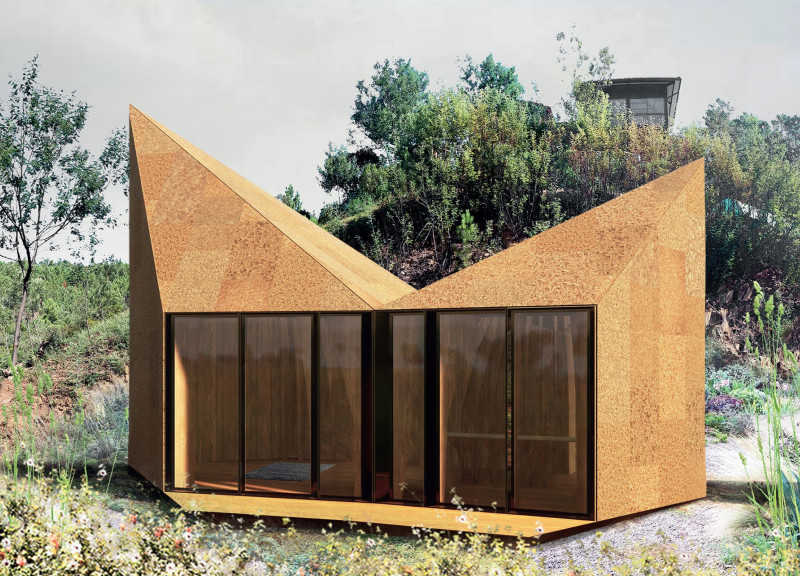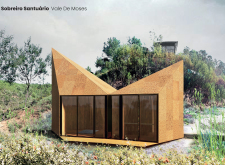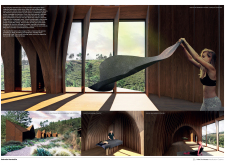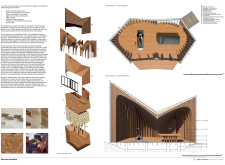5 key facts about this project
The design focuses on creating a tranquil atmosphere that allows visitors to engage with nature while offering functional spaces for yoga, meditation, and relaxation. Large glass components enhance the connection to the outside, flooding the interiors with natural light and providing expansive views, which are essential to the project’s purpose. Material selection plays a crucial role, emphasizing sustainability and local sourcing.
### Unique Materials and Design Approaches
The architectural design employs a carefully curated selection of materials, including cork, plywood, timber, and glass. Cork serves as both a cladding and insulation material, effectively balancing aesthetics with thermal efficiency. Plywood is used for its flexibility in forming contoured internal surfaces that create a soothing ambiance. The use of timber not only adds warmth to the interiors but also reinforces the connection between the man-made and natural elements. Glass panels are utilized strategically to maximize daylight and foster a strong visual connection to the outdoor landscape.
A distinctive feature of this project is its approach to spatial configuration. The layout alternates between open and enclosed areas, allowing for a dynamic flow that encourages exploration while ensuring privacy in meditation spaces. The architectural design intentionally creates transitions between various environments, cultivating a sense of journey and discovery, which is often missing in typical wellness centers.
### Interaction with the Surrounding Environment
The project carefully considers its geographical context, embedded in the lush surroundings of Vale de Moses. The landscape is integrated into the design through thoughtful landscaping that utilizes native flora to promote biodiversity. The architectural forms integrate with the topography, enhancing the overall aesthetic and environmental sustainability.
This project stands apart from conventional architectural designs by effectively marrying modern techniques with traditional sanctuary concepts, focusing on both individual and communal experiences of peace and tranquility. The Sobreiro Santúario demonstrates a commitment to sustainability, functionality, and the promotion of well-being through architecture.
For a deeper understanding of the Sobreiro Santúario, consider exploring architectural plans, architectural sections, and architectural designs that further illustrate its unique elements and design strategies.


























